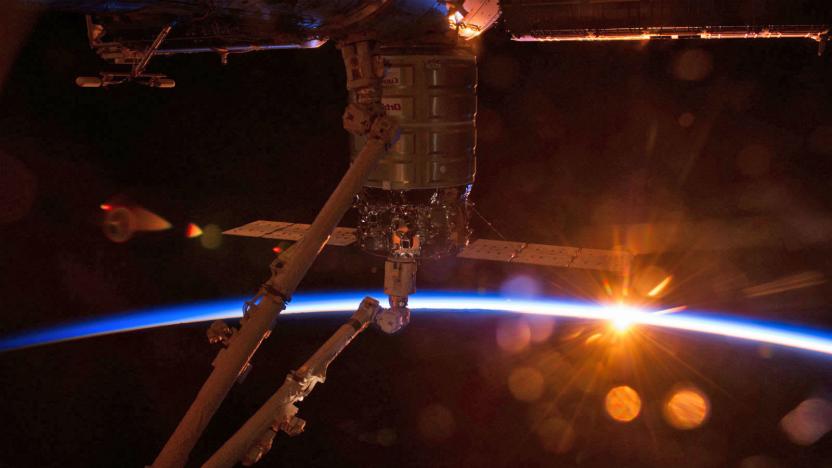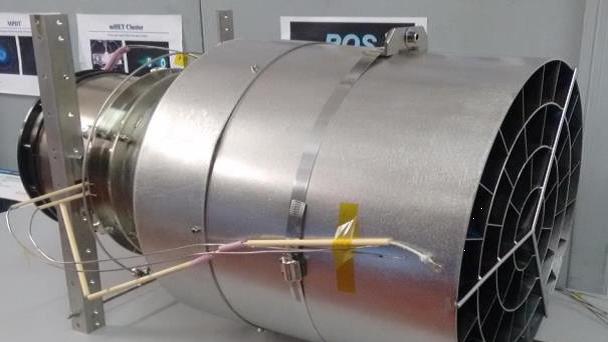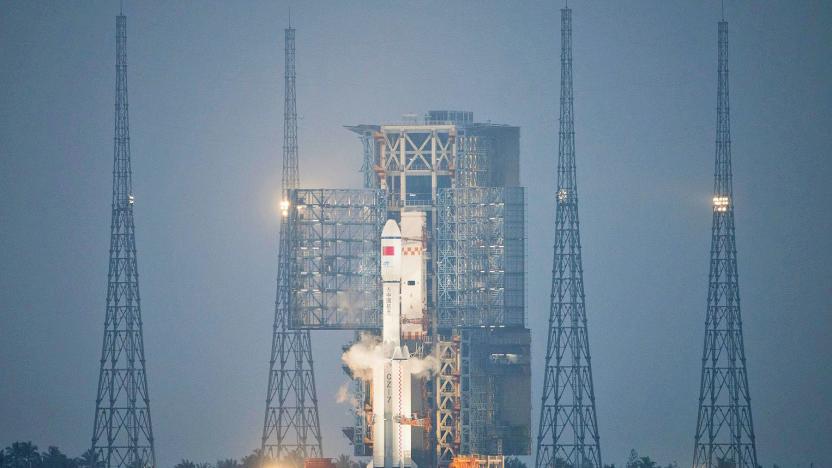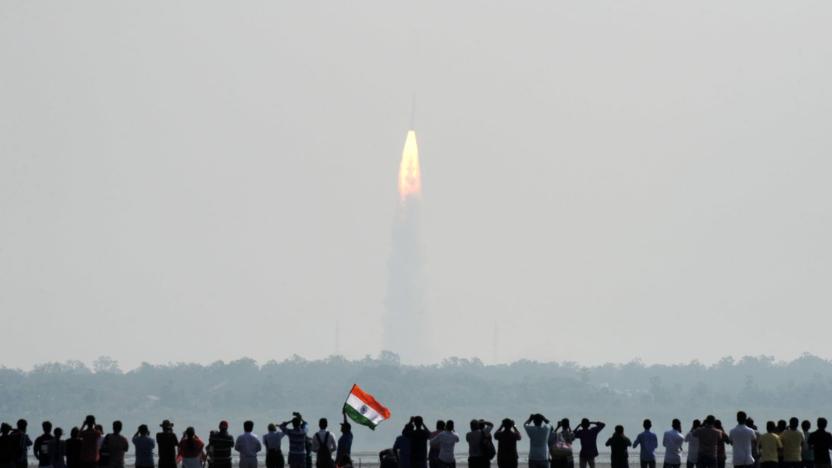orbit
Latest

Watch SpaceX's all-civilian Inspiration4 spaceflight here at 8PM ET
SpaceX is making history by launching the first ever all-civilian mission to orbit, and you can watch it happen live.

SpaceX's first private flight will put a 29-year-old American in orbit
One of the private citizens on SpaceX's commercial Inspiration 4 mission will be Hayley Arceneaux, who at 29 years old will be the youngest-ever American to fly into space, the NY Times has reported.

Rocket Lab secretly launched its own satellite designed to go to the Moon
Rocket Lab recently made a successful return to flight and launched a client satellite from its Electron Rocket, but that’s not all that happened on the mission. The company also secretly launched its own satellite, called Photon, that could one day fly ambitious deep space missions.

There could be as many as six billion Earth-like planets in our galaxy
The findings could have a big impact on future space missions.

Boeing’s Starliner will not reach the ISS in its first test flight
Early this morning, Boeing launched the Starliner capsule for its first uncrewed test flight. Unfortunately, things did not go as planned and while the Starliner made it into orbit, it did not achieve the correct orbit.

Solar-powered LightSail spacecraft is ready for its second flight
When the SpaceX Falcon Heavy rocket launches this summer, it will carry the Planetary Society's Carl Sagan-inspired LightSail 2. You may remember LightSail as a crowdfunded, experimental "solar sail." The unique craft looks something like a giant kite, and it was envisioned as a way to guide satellites around space using energy from the sun, rather than chemical fuel. The first LightSail took flight in 2015, and now the Planetary Society is ready to launch LightSail 2, which has worked out a few bugs and will provide an opportunity to further test solar sailing.

NASA opens the International Space Station to commercial ventures
The International Space Station (ISS) is open for business. NASA announced today that it plans to commercialize the ISS, so that "U.S. industry innovation and ingenuity can accelerate a thriving commercial economy in low-Earth orbit." According to a press release, NASA will open the space station to private astronauts, as well as commercial product development, testing and manufacturing.

SpaceX explains how its internet satellites will survive in orbit
Earlier this week Elon Musk gave us a sneak peek at Space X's Starlink internet satellites before they're propelled into orbit. We can already see that it's a bit of a squeeze for the 60 production satellites inside the Falcon 9 rocket faring, so we know they're pretty flat-pack. Now, SpaceX has revealed a little more about how they actually work.

Three teams will compete for millions in DARPA's rocket launch challenge
Despite all of the advancements in space travel, rocket launches are still hindered by the fact that they take months, if not years, to plan and execute. Because that could slow vital military operations, DARPA created the Launch Challenge: a call for commercial companies to prove they can get rockets into space quickly and on short notice. Now the three finalists have been selected for the next phase of the challenge.

SpaceX won't take tourists around the moon this year
In February of 2017, SpaceX announced that it would send two private citizens around the moon by this year. While the two individuals paid a "significant" deposit, their trip is apparently postponed until 2019, according to a report at the Wall Street Journal.

This galaxy without dark matter is bending the rules of space
The complexities of space are pretty mind-boggling, but there are a handful of accepted theories on which scientists base their research. Space is a vacuum, for example, while a light-year is about 5.88 trillion miles. So researchers at Yale University were understandably shocked when they discovered that one long-held theory might not be right. For years, science has assumed galaxies and dark matter go hand in hand. Now, a galaxy has been discovered that's almost completely devoid of it.

Vanguard I has spent six decades in orbit, more than any other craft
As of this month, the US satellite Vanguard I has spent 60 years in orbit and it remains the oldest man-made object in space. Vanguard I was the fourth satellite launched into orbit -- following the USSR's Sputnik I and II and the US' Explorer I. But none of the first three remain in orbit today and though Vanguard I can't send signals back to Earth anymore, it's still providing valuable data for researchers.

ESA's air-breathing thrusters help keep satellites alive longer
Satellites could soon remain in orbit for years on end thanks to new technology that turns air molecules into propellant. A European Space Agency (ESA) team has developed an electric thruster that collects molecules from the top of the atmosphere and gives them electric charges so they can be accelerated and ejected to provide thrust. This could create a new class of satellites able to operate in orbit for long stretches.

NASA makes contact with satellite lost in space 13 years ago
Proving that things tend to turn up when you least expect them, NASA has just rediscovered a satellite it lost in space more than a decade ago. The Imager for Magnetopause-to-Aurora Global Exploration (IMAGE) was launched in 2000 to create the first comprehensive images of atmospheric plasma. It completed its initial mission in 2002, but failed to make contact again on a routine pass by the Earth in 2005. Scientists hoped an eclipse in 2007 would kickstart a reboot, but when it didn't the mission was declared over, and IMAGE was expected to spend the rest of its days floating peacefully through the universe. Earlier this month, however, an amateur astronomer spotted it in the skies.

Rocket Lab reaches orbit for the first time
Rocket Lab has reached orbit for the first time, even though it's only the private space company's second flight. Even more impressive? The test mission, dubbed "Still Testing," had three customer satellites in tow: one is an Earth-imaging satellite, while the other two will track weather and boats. By successfully sending those satellites to orbit, the company has proven that its Electron rocket flights are a viable low-cost alternative for companies that want to send small payloads to space.

Orbital ATK's Taurus rocket finally makes it into space
Six and a half years after its last launch ended in failure, private spaceflight company Orbital ATK's Taurus-XL rocket -- now called Minotaur-C -- has made it into space. Since its maiden flight in 1994, the rocket has seen six successful launches and three failures, one of which led to the loss of NASA's Orbiting Carbon Observatory, in 2009. But after a redesign that sees the Minotaur-C reimagined as hybrid of the company's Minotaur, Taurus, and Pegasus rockets, it successfully launched from Vandenberg Air Force Base in California on Tuesday. The rocket is equipped with four solid-fueled rocket stages, stands at 92 feet (28 meters) tall and can deliver payloads of up to 3,500 lbs into orbit.

China proves its first resupply spacecraft can reach orbit
China's space program just hit a milestone: according to Reuters, its first cargo probe has successfully proven that it can ferry supplies to orbit. Tianzhou-1 took off from the Wenchang Satellite Launch Center in the mainland on April 20th. In the early hours of April 22nd, Eastern time, it performed an automated docking maneuver to attach itself to the country's orbiting lab, the Tiangong-2. You can think of Tiangong 2 (or "Heavenly Space Lab") as China's experimental space station, which housed two astronauts for a month in October 2016. The country is using it to test new technologies for the larger manned space station that it hopes to establish in orbit by 2022.

SpaceX releases video of its historic reused rocket landing
SpaceX made history last week when it successfully relaunched a previously-used rocket back into orbit (recovering the $6 million nosecone was just gravy). That rocket body could potentially be used yet again, given how spryly it set down on its drone barge, the Of Course I Still Love You, after delivering its SES-10 vehicle payload, if the company's Instagram post from Wednesday is any indication.

Blue Origin's latest rocket engine is finally complete
After six years of development, the first of Blue Origin's new BE-4 rocket engines has finally been fully assembled. The company's founder and CEO, Jeff Bezos, debuted the images via a series of tweets.

India sets record launching 104 satellites aboard a single rocket
The Indian Space Research Organisation, India's version of NASA, set a record on Valentine's Day when one of its PSLV rockets successfully launched 104 satellites into orbit. Riding onboard were 88 "Dove" mini-satellites from Planet, a US-based private imaging service, India's Cartosat 2D high-resolution imaging satellite, and 15 others from various nations.






